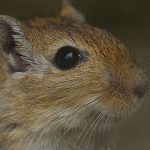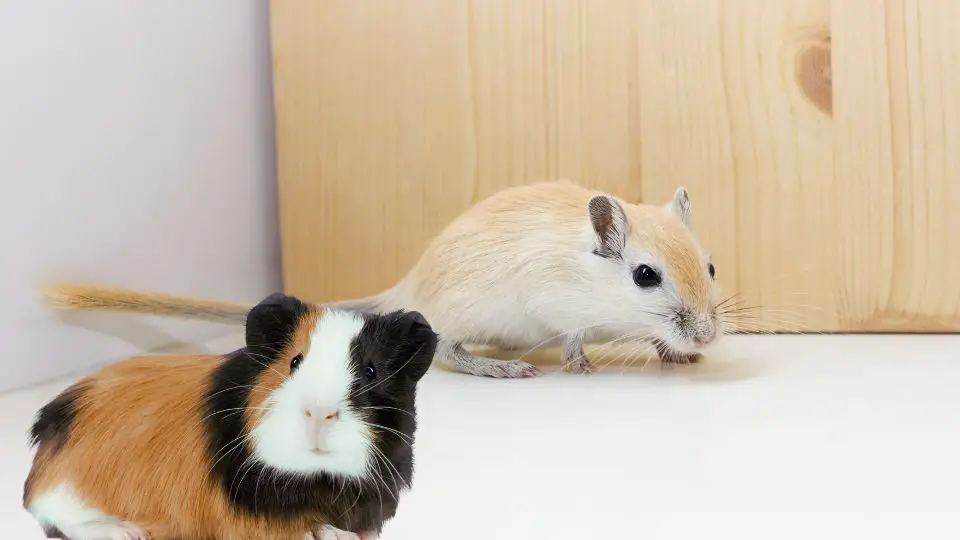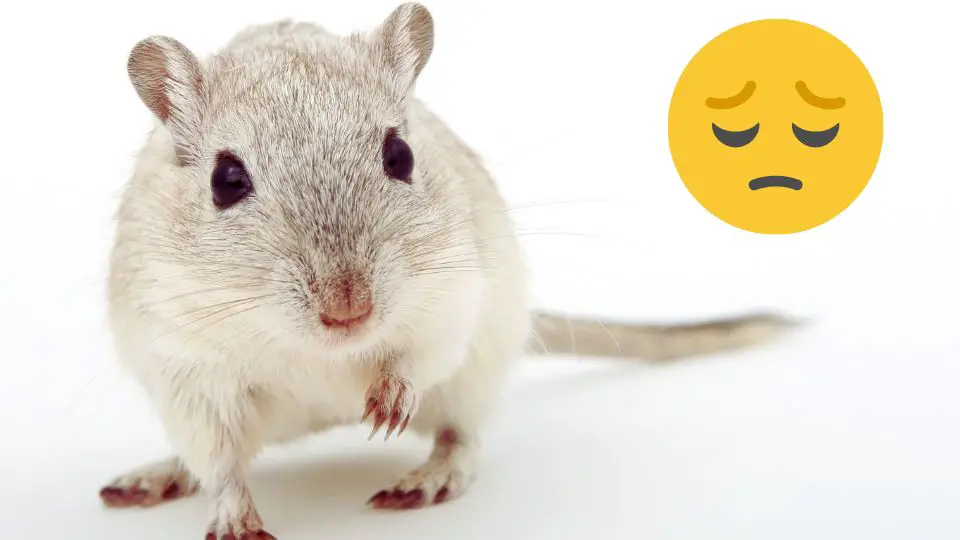Gerbils are a popular pet choice for many people, and one of the first things people consider when thinking about getting a gerbil is the size of the animal.
Gerbils are small animals, typically growing to be between 4-5 inches (10-13 cm) long, measured from their nose to the tip of their tail. This size can vary slightly depending on the species of gerbil, but in general, gerbils are small and easy to care for.
However, it’s important to keep in mind that size is not the only factor to consider when thinking about getting a gerbil. Gerbils have specific needs for diet, housing, and exercise that must be met in order for them to thrive.
In this article, we will explore the size of gerbils, including how big they can get, how size can vary among different gerbil species, and how size affects the care of gerbils.
How big do gerbils get?
Gerbils typically grow to be between 4-5 inches (10-13 cm) long, measured from their nose to the tip of their tail, and weight 90 – 120 grams. They are small animals and the size can vary slightly depending on the species of gerbil. They typically reach their adult size at around 4–5 weeks old.
Although they are small, gerbils have some advantages in the wild because of their size:
- They can fit into small burrows and crevices, making it easier for them to escape predators and find shelter.
- They require less food and water to survive, which can be beneficial in areas where resources are scarce.
- They are able to move quickly and agilely, which allows them to evade predators and forage for food more efficiently.
- Their small size also allows them to conserve energy and survive in harsher environmental conditions.
- Their small size also allows them to reproduce quickly and in large numbers, which can help ensure the survival of the species.
- Being small can also help them hide from predators and avoid being noticed.
The small size of gerbils in the wild is an evolutionary adaptation that allows them to survive in their natural habitat, and it gives them a better chance of survival in the wild.
The following tables show how big gerbils get and how much they weight at different stages of their life.
| Stage of Life | Female (inches) | Male (inches) |
| Birth | 0.5 – 0.75 | 0.5 – 0.75 |
| 1 week | 1 | 1 |
| 2 weeks | 1.5 | 1.5 |
| 3 weeks | 2 | 2 |
| 4 weeks | 2.5 | 2.5 |
| Adult | 4 – 5 | 4 – 5 |
| Stage of Life | Female (grams) | Male (grams) |
| Birth | 5 – 10 | 5 – 10 |
| 1 week | 20 – 25 | 20 – 25 |
| 2 weeks | 35 – 40 | 35 – 40 |
| 3 weeks | 50 – 55 | 50 – 55 |
| 4 weeks | 75 – 80 | 75 – 80 |
| Adult | 90 – 120 | 90 – 120 |
It’s important to note that, as gerbils are small animals and their size is relatively similar between females and males. However, some variations may occur depending on the specific species and individual animal.
What’s the Biggest Gerbil Ever?
The Great Gerbil (Rhombomys opimus) is the largest species of gerbil and can grow significantly larger than the typical gerbils kept as pets. The Great Gerbil can reach up to 20 cm in head-and-body length and with a total length that can exceed 40 cm.
They are found in the deserts and semi-deserts of Central Asia and it’s not a common pet. As a pet, the most common gerbils kept are the Mongolian gerbil and the Roborovski gerbil, which are smaller in size compared to Great Gerbil.
What’s the Smallest Type of Gerbil?
The Desmodilliscus braueri is the smallest species of gerbil and typically grows to be around 4 to 8 cm long and weighting 6 to 14 grams.
How Big Do Mongolian Gerbils Get?
Mongolian gerbils (Meriones unguiculatus) typically grow to be around 4-5 inches (10-13 cm) long, measured from their nose to the tip of their tail, and can weigh around 90-120 grams. This is slightly larger than the Roborovski gerbil which is the smallest species of gerbil and typically grows to be around 2.5-3.5 inches (6-9 cm) and weighs around 30-45 grams.
Factors that can affect adult size
There are several factors that can affect the adult weight of male gerbils, including genetics, diet, and environment.
Genetics
The weight of a gerbil is influenced by genetics, so animals from the same litter may vary in weight. Some gerbil breeds are naturally larger or smaller than others. For example, the Mongolian gerbil can weigh a bit more than the Roborovski gerbil.
Diet
The diet of a gerbil plays a major role in determining its adult weight. A diet that is high in calories and low in nutrients can lead to obesity in gerbils. On the other hand, a diet that is low in calories and high in nutrients can lead to weight loss. Feeding a balanced diet with the right ratio of protein, fat and carbohydrates, vitamins and minerals is crucial in maintaining a healthy weight.
Environment
The environment in which a gerbil is kept can also affect its weight. Gerbils that are kept in a clean, well-ventilated cage with plenty of room to move around are more likely to maintain a healthy weight than those kept in a small, dirty cage. Also, providing an adequate exercise wheel, toys and climbing structures can help the gerbil maintain a healthy weight.
Understanding the size and needs
Understanding the size and needs of gerbils is important for providing them with proper care.
Proper diet and exercise keep gerbils at a healthy weight. Feeding a diet that is high in calories and low in nutrients can lead to obesity, while a diet that is low in calories and high in nutrients can lead to weight loss. A balanced diet with the right ratio of protein, fats, carbohydrates, vitamins, and minerals is crucial in maintaining a healthy weight.
Providing an adequate exercise wheel, toys and climbing structures can also help gerbils maintain a healthy weight. Geribls kept in a clean, well-ventilated cage with plenty of room to move around also can help them maintain a healthy weight.
If you notice that your gerbil is gaining or losing weight rapidly or has a noticeable potbelly, it’s important to consult a veterinarian for an evaluation.
Gerbils have a relatively low body fat percentage, so even a slight weight gain can be a sign of an underlying health issue. In some cases, obesity in gerbils may be related to a lack of physical activity, an unbalanced diet, or an underlying medical condition, such as diabetes or a thyroid disorder.
Conclusion
Gerbils are small animals that can vary in size depending on the species. The most common gerbils kept as pets are the Mongolian gerbil and the Roborovski gerbil, which grow to be 4-5 inches (10-13 cm) long and weigh 90 – 120 grams. The smallest gerbil, the Desmodilliscus braueri, typically grows to only 4 – 8 cm long and weighs 6 to 14 grams.
Genetics, diet, and environment all play a significant role in determining an adult gerbil’s weight. Feeding a balanced diet with the right ratio of protein, fat and carbohydrates, vitamins and minerals is important for maintaining a healthy weight.







